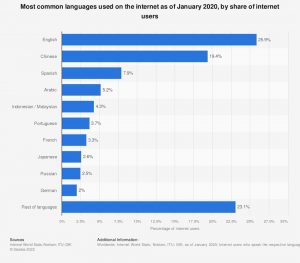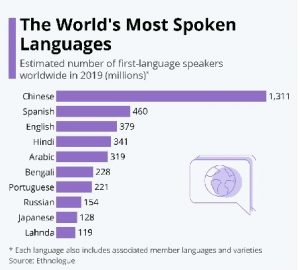May 2, 2022

Your e-commerce business may be thriving in your home country. However, a limited customer base can constrain your business moves within a narrow box. That said, with just a few customers, your business could be limited in its potential growth.
If you’re already a part of this eCommerce organization, you may be speculating about how to increase your sales.
E-commerce localization translates a company’s online profile, product descriptions, database-driven content, and graphics with cultural accuracy into the language of the company’s new audience.
Unsurprisingly, e-commerce can be a veritable gold mine today. The recent pandemic has already hit this market. US customers spent about $709.78 billion in 2021, signifying an overall growth of 18.0% in e-commerce. Additionally, online sales are expected to reach 14.5% of total retail sales – the largest single-year share increase in the market.
Without a firm transformation and localization approach, entering a global market will be unviable. According to a report by Statista, “English is the most common language used on the internet as of December 2017. However, when it comes to the world’s most spoken language, Chinese is at the top in the world ranking for the most commonly used language in terms of population with 1.28 billion speakers. The second is Spanish with 437 million speakers while the third on the list is English with 372 million.”


You can’t just use one or two languages on your e-commerce website or you might not reach all of your potential markets. Remember that there are over 70 languages to choose from, especially as this type of online business goes global.
So, what are the advantages of localizing your business universally? Here are a few to jot down:
It is important to verify the target country where you want to expand your business. It is very important to understand the country’s cultural diversity, language, customer behaviour, and market before starting your business. Your website’s client interface must meet the needs of the person you are targeting.
Create a product description that is correct and written in a style that makes the target customer feel like each product and description is tailored.
The most significant part of localization is having multilingual specialists who can translate their complete website, including the database content, the descriptions of the products, and images in the language of the new target group.
Change the price of each item based on the present exchange rate in various countries. Set up a method where this can be done automatically and as and when prices vary every second!
Automatically prevent any items that are banned in the country in order to avoid legal breaches.
The most important part of Global E-commerce is safeguarding the payment transaction. In order to provide a protected and hosted international point of sale, ensuring that all transactions are legal and acknowledged in several currencies is essential.
Via package forwarding, make sure that you have the best global shipping cost, or else your consumer will go to your competitors. Make sure all customs documentation and international shipping should be taken care of.
It is important to understand the different cultural and economic needs when it comes to e-commerce localization, especially if you want to succeed in the global marketplace. Ecommerce localization is the opportunity to take your business out into the world.
Your customers are everywhere. They cannot all be found in one place on earth. Internationalization allows you to seize unlimited opportunities for growth. Competition, technology, and the foreign market will certainly be a challenge; but they will also be a great motivator and a tool to improve your business in a rapidly interconnected world.
Now that you know how important e-commerce localization is for your business, it is high time you set it right. Proper. Lengthy story brief, you just have to get started. It can be tough and daunting

